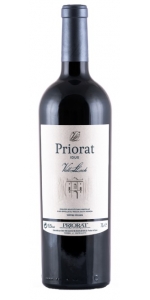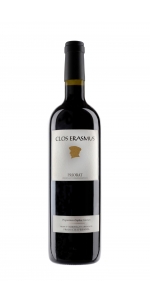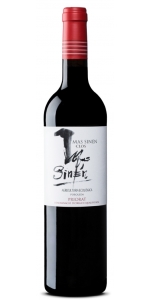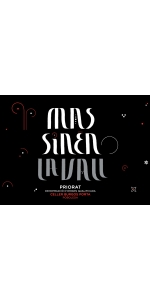Wine from Priorat

Priorat is a wine region in Spain that covers 11 municipalities. Known for its bold and powerful red whites, the region is characterized by black slate and quartz soil, which make up the unique terroir. It is one of only two regions in the country that qualify as DOCa, giving it the highest qualification for wine making.
The monks were the first to plant grapes in the region in the 12th century after founding the Monastery of Scala Dei in 1194. The monks tended the grape vines until 1835 when the land was taken away and distributed among small shareholders. Phylloxera devastated the vineyards at the end of the 19th century, and was not replanted until the 1950’s.
The vineyards are planted between 100 and 700 meters above sea level with a total of 19,783 hectares. The soil is volcanic in origin and comprises of black and red slate with tiny particles of mica, which helps to conserve and reflect the sunlight. There are several microclimates in the area and contrast between freezing winds in the north, and warm winds to the east. Summers are hot, long, and dry with temperatures averaging around 92°. Winters are cold with a minimum temperature of 24°.
Celler Vall Llach Idus
Since its founding in the early 1990s by celebrated singer Lluís Llach and notary Enric Costa, Celler Vall Llach has committed itself to rigorous quality standards. Located in the tiny mountain town of Porrera in the D.O.Q. Priorat, the winery is now headed by Enric’s son Albert as winemaker, general manager and co-owner.
The magnificent century-old estate vineyards boast 60- to 90-year-old Cariñena and Garnacha vines as well as newer plantings of Garnacha, Cabernet Sauvignon, Merlot and Syrah that add complexity to Vall Llach’s range of widely acclaimed wines. Priorat’s notoriously stingy llicorella (fractured black slate) hillsides produce extremely low yields of intensely flavored grapes.
The Celler makes this wine from grapes from very old vines, some of which are centuries old, belonging to selected farms, owned by farmers who have been collaborating with us since our foundation. From the Cellar, we make a thorough follow-up of each of the production processes. And this collaboration with the farmers, who bring us inherited traditions and customs, allows Celler Vall Llach to identify this wine with the effort and uniqueness of the cultivation of these lands. Idus is a local wine. AGING The wine was transferred to 225 and 300 litre second wine barrels of light- and medium-toasted fine grained new French oak. The wine was moved once during the ageing period of 14 months
Review:
Made with Carignan and Garnacha, this deep-violet-colored wine has a bouquet of dark plum, purple fig, clove and lavender. It is smooth in the mouth, with flavors of black currant, blackberry, dark chocolate, anisette and violet. It offers bold acidity, plush tannins and a lengthy finish.
-Wine Enthusiast 95 Points
This wine is one of the absolute benchmarks for fine Priorat, and a reference in Spain. Sourced from 3 small vineyards in the Gratallops, this blend of Grenache and Syrah undergoes strict berry selection and is fermented and aged for 20 months in barrels and amphorae. It is all about dense fruit, exotic spice and licorella minerality, with a freshness and elegance are truly singular, even among the top wines of the appellation.
Mas Sinen Clos Priorat is made from 38% Garnacha, 22% Cabernet Sauvignon, 23% Carinena, 16% Syrah.
Before the 2017 vintage, this wine was called Negre. It is the same vinification and level of excellence as the prior cuvee, but with a different name.
It's quite ripe, concentrated, powerful and oaky with black rather than red fruit and peat and graphite aromas. The palate is full-bodied with plenty of rough-hewn tannins and moderate acidity, and is in need of bottle age and/or powerful food. An XXL Priorat.
Mas Sinen Coster Reserve Priorat is made from 50% Grenache and 50% Carignan.
he Priorat DO was created in 1954. But it is only in the 1990 that the quality of the wines were able to compete internationally. It is now a DOCa (The highest qualification level for a wine region according to Spanish wine regulations, alongside Rioja DOCa). Total acreage for the entire appellation is 4,400 acres. Intense red cherry color with garnet reflections. Black fruit, compote fruits, hints of balsamic. The mouth is ripe and intense, fresh and powerful. Strong and flavorful.
50 year old vines planted on Llicorella soil (decomposed black and reddish Slate, mixed with Mica and Quartz). Light filtration.
Mas Sinen La Vall Priorat is made from 57% Garnacha, 24% Cabernet Sauvignon, 10% Cariñena (Carignan), 9% Syrah.
This wine has a highly intense, lively vermilion red color, complex yet direct aromas with predominant ripe black and red fruits, notes of minerals and forest herbs. Flavors are strong, full and layered with round, fresh and delicate tannins.
Pairs with meat, sausage, cheese.
Mas Sinen Negre Priorat is made from 38% Garnacha, 22% Cabernet Sauvignon, 23% Carinena, 16% Syrah
Aged in 90% French, 10% American oak barrels for 12 months.
Maceration for 21 days. ML in stainless steel tanks.
Clarification with white egg and soft filtration.
The wine shows great spice and leather components, some minerality and a lot of ripe red fruits aromas as well.
This wine is certified organic.
Review:
"Dark, bright-rimmed ruby. Highly perfumed, mineral- and smoke-accented red and dark fruit preserve, baking spice and floral pastille aromas, along with hints of licorice and black tea. Gently chewy and focused on the palate, offering juicy cherry, blackberry and spicecake flavors that deepen and turn spicier as the wine opens up. Finishes impressively long and sappy, with a lingering floral nuance, well-integrated tannins and a jolt of smoky minerality. Raised in new and used barrels, 90% French and 10% American.- Josh Raynolds"
- Antonio Galloni's Vinous (March 2021), 93 pts
- back
Selected Options
Regions
Categories
Pricing
Countries
Regions
Grape Types
Wineries
Organic/Free Shipping
All older vintage wines have been purchased from a single collectors cellar. Pictures can be requested before shipment.
The backbone of this Cabernet Sauvignon is derived from a vineyard in the Atlas Peak AVA of Napa Valley where soils are volcanic in origin and have limited water retention. The balance of fruit is sourced from Coombsville and Oak Knoll. The small berry clusters and intense fruit from low-yielding vines create a wine with full flavor and longevity.
This Cabernet delivers multi-layered aromas of ripe black cherries, toasted oak, dark chocolate, cardamom, vanilla bean, and cedar. A rich medium-bodied wine with plush rounded tannins and juicy blackberries and orange zest that linger on the finish.
TA: 0.72 g/100ml
pH: 3.59










